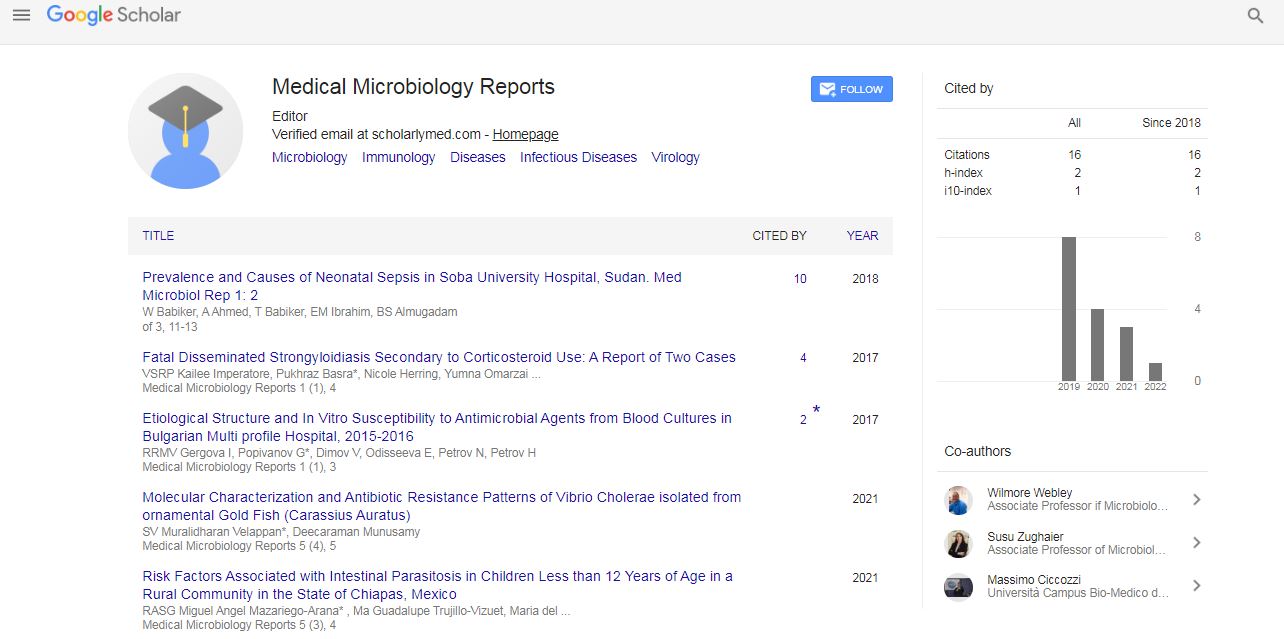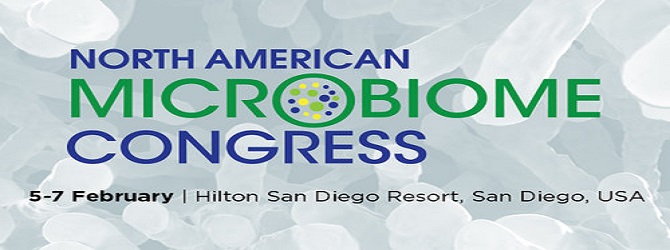Scaffold protein RACK1 protein potentially regulates IRES-mediated virus translation: A target for HIV- 1 proliferation inhibition
Israa a Malli, Namita Kumari, Nekhai Sergei, Sivanesan Dakshanamurthy, Hemayet Ullah
King Saud bin Abdul-Aziz University for Health Sciences (KSAU-HS), Saudi Arabia
Howard University, USA
Georgetown University Medical Center, USA
: Med Microbiol Rep
Abstract
Statement of the Problem: AIDS is a serious health burden with approximately 36.7 million people who are living with HIV infection. It is estimated that 2.1 million people are newly infected annually, while almost 2 million die from AIDS-related illnesses every year. Moreover, as HIV- 1 continues to mutate with even the most efficient drugs, new chemotherapeutics will always be needed. It has been shown that an Internal Ribosome Entry Site (IRES) is utilized by various viruses to enhance viral genomic translation while the host cap-dependent translation is reduced. Analysis of HIV- 1 genome from clinical isolates revealed that HIV- 1 has two identified IRESs among its transcripts. Receptor for Activated C Kinase 1 (RACK1), a ribosomal protein, is known to be essential for IRES recognition of viral mRNAs. But it is not required for 5' capped recognition in most DNA viruses as well as for host 5' capped mRNAs. Since RACK1 is important for the translation process of IRES-utilizing viral genes, it therefore hypothesized that inhibiting the host RACK1 protein function would potentially prevent HIV-1 induced translation. The purpose of this study is to analyze the role of RACK1 in the IRES-mediated translation of HIV-1 virus proliferation in HEp2 cells. Methodology & Theoretical Orientation: RACK1A crystal structure based in silico drug docking experiment resulted in the isolation of RACK1 functional inhibitor compounds" These compounds are utilized in the current study. The functional molecules, SD29 and its analogues were used to investigate inhibitory potential of these compounds as anti-HIV-1 drugs. The efficacy of the inhibitor compounds on the regulation of HIV-1 IRES-based translation was assayed in a dual luciferase reporter constructs. Findings: The compounds were found to inhibit the HIV-1 IRES structural proteins in a dose-dependent manner. The compounds were found also to inhibit the single cycle competent pseudo-HIV-1 proliferation in HEp2 cells. Conclusion & Significance: These results have validated the compounds as host-targeted anti-HIV-1 drug. It is possible that the drugs may also have broader activities as they could potentially target other IRES utilizing viral proliferation. It is postulated that such host-targeted anti-viral would circumvent the development of drug resistance that has been observed in treatment of HIV-1 infection.
Biography
Israa Abdullah Malli earned her bachelor’s degree in medical laboratory sciences at King Abdul Aziz University, Jeddah- KSA; and supported by King Saud bin Abdul-Aziz University for Health Sciences (KSAU-HS), she pursued a Master's in Biotechnology from the Catholic University of America (CUA), Washington, D.C. USA in 2012. She earned her Doctoral degree from the Department of Microbiology in 2017 from Howard University.
E-mail: Mallii@ksau-hs.edu.sa
 Spanish
Spanish  Chinese
Chinese  Russian
Russian  German
German  French
French  Japanese
Japanese  Portuguese
Portuguese  Hindi
Hindi 
